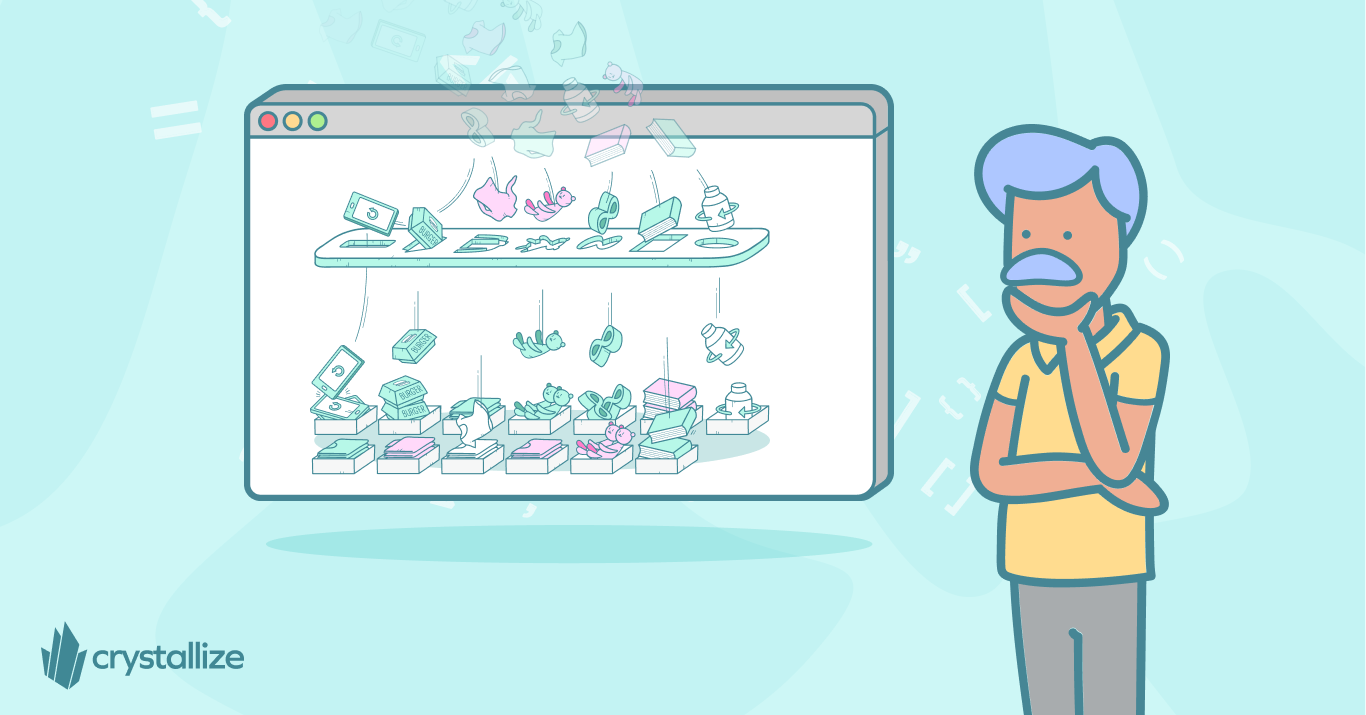Blending Storytelling with a Headless PIM Strategy
This experiment was about more than coffee—it was about pushing the limits of product information management to craft an engaging e-commerce experience.

Brewed to Perfection was my way of learning the ropes, pressure-testing Crystallize, and pushing a headless PIM to its limits. What started as a playful coffee concept turned into a hands-on blueprint for scaling content-rich commerce.
There are coffee lovers, and then there are coffee connoisseurs – you know, the total nerds who know every single thing about coffee, from beans to roasting and brewing. I'm definitely not that hardcore; I just really dig coffee. I also needed a hands-on way to explore Crystallize's features and dive deep into headless commerce tech. So, I launched my own little experiment: the Brewed to Perfection coffee brand.
As a marketer, I know that a story sells. And in modern commerce, product storytelling isn’t fluff — it’s the differentiator. So I built Brewed to Perfection with a rich origin tale that could live inside the product catalog, not just in blog posts.
☕ Brewed to Perfection: Crafted Slow. Brewed Right.
In 1999, on a quiet Oslo morning touched by sea mist and the scent of warm bread from a nearby bakery, a small coffee shop opened its doors with a simple mission: to make coffee that felt like coming home.
That place became Brewed to Perfection☕
Founded by a group of friends—a roaster, a barista, a botanist, and a storyteller—Brewed to Perfection was born out of the belief that coffee wasn’t just a beverage. It was a ritual, a rhythm, a bridge between people.
Brewed to Perfection brings craft, calm, and character to your cup.
Cool story, right?
So, to make this whole thing even more real, I delved into the coffee world itself; think blends, flavor notes, different package types, brewing tips, the whole nine yards. Long story short, I landed on three blends: Nordic Dark Roast, Citrus Bloom, and Velvet Cocoa. And of course, I wanted to sell these across various regions, in different currencies, with all sorts of payment options.
I’d tried to wrangle this kind of setup in spreadsheets and traditional commerce/CMSs before; it always broke down. Either the structure was too rigid for flavor notes and variant combos, or the content lived in a completely different system from the data. Crystallize headless PIM promised to bring it all under one roof and let me test that claim, blend by blend.
What's a headless PIM, you ask? Basically, it separates where your product data lives (the backend) from where it's shown (any frontend). It sends product info via an API so you can use it on websites, apps, or pretty much anywhere else. In fact, about 60% of retailers actually think a headless PIM offers way more flexibility and scalability for their business (check out these PIM stats if you're curious).
For Brewed to Perfection, adopting a headless PIM enabled me to centralize all product data and rich content in one place, which I can seamlessly distribute to regional e-commerce sites and digital channels I planned to conquer.
I believe the best way to learn is through examples, and this post walks you through how I maximized Crystallize’s PIM capabilities to streamline product management and accelerate growth, all while blending in a healthy dose of storytelling.
Grab a cup of your favorite brew, and let’s dive in.
Crafting a Flexible Product Catalog with Shapes and Components
One of the first challenges was structuring a rich product catalog that could handle everything from basic specs to immersive storytelling. Crystallize uses Shapes as flexible product templates. Think of Shapes like LEGO instruction booklets for your content team. Every product built from it follows the same structure — whether you're stacking bricks or flavor notes.. A shape is a custom content model comprising various fields called Components (text, images, numbers, etc.) that editors fill in for each item. The LEGO bricks, if you will. By separating the template (Shape) from the actual content (product items), we get consistency and flexibility across our product universe.
For Brewed to Perfection, I created a custom Coffee Product shape to capture each blend’s critical details. This shape serves as a tailored template, providing fields for both product specifications and rich storytelling. For example, my Coffee Product shape includes components like a rich text Description for the bean’s origin story and roasting process, a list of Flavor Notes (e.g. “dark chocolate, citrus, nuts”), a Brewing Tips field for best brewing practices, and an image gallery for product photos (packaging shots, close-ups, maybe a lifestyle image with a steaming cup). I even added a related-products component to link items (like suggesting a matching coffee mug or drip kit). That shape didn’t just organize data; it encoded my brand’s personality right into the product layer. Every blend told a story, and the structure ensured that every story reached every channel.
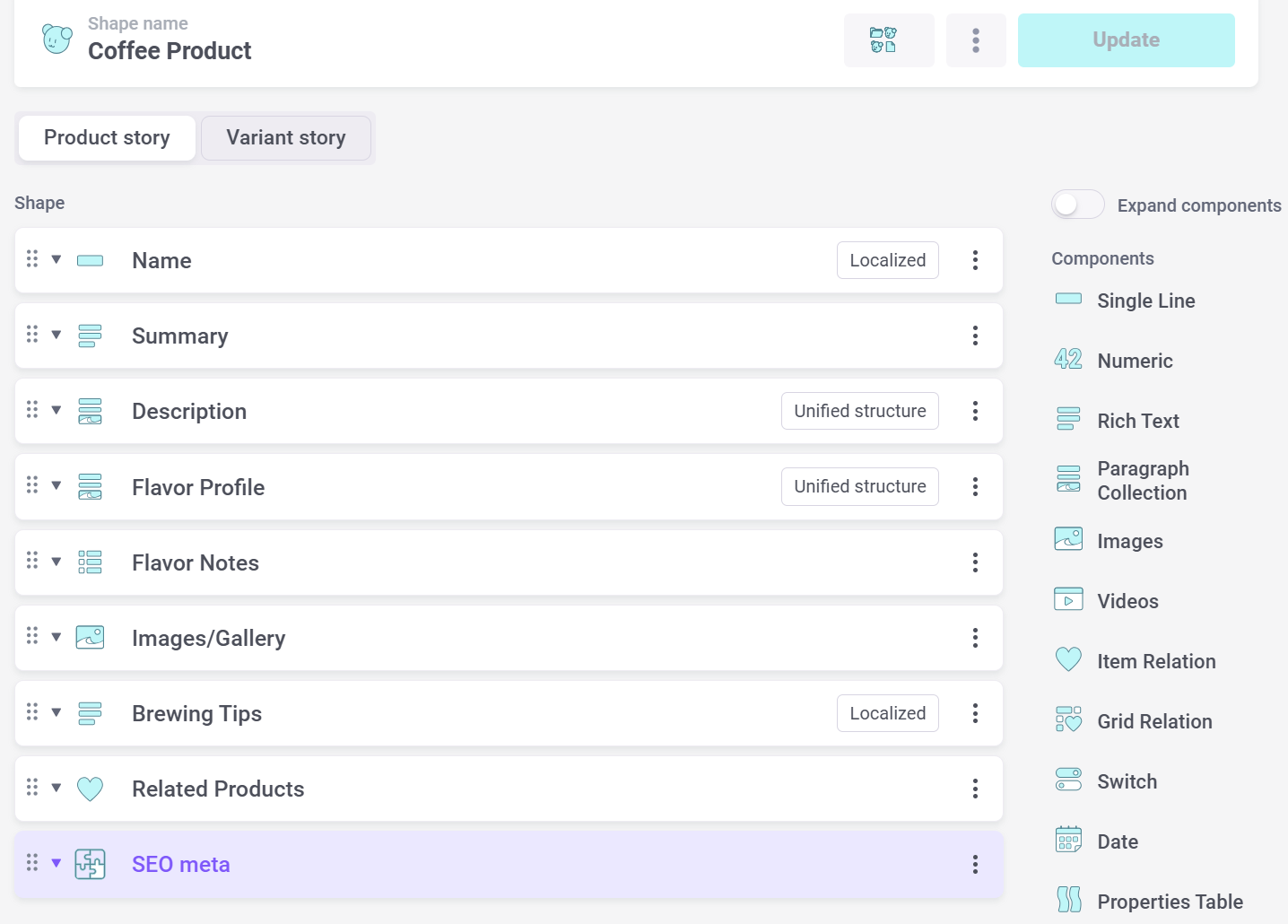
💡This structured yet rich approach meant every product entry follows a consistent format.
Whether it’s Nordic Dark Roast or Velvet Cocoa, each uses the Coffee Blend shape, ensuring no important info is missing and that the data is organized uniformly. The benefit? My catalog is way easier to manage, and the customer gets all the info and story in one place on the product page.
Managing Product Variations (Size & Grind) and Inventory at Scale
Like many coffee brands, Brewed to Perfection offers options for each blend. A single coffee product might be sold in multiple sizes (250g or 1kg bag) and grind types (Whole Bean or Ground). In a naive setup, you might create a separate product entry for every combination – but that would get out of hand quickly (and make inventory tracking a pain). Crystallize simplifies this with product variants: one product can have multiple variants for every permutation of options. We set up each coffee blend as one product entry, then defined variants under it. All these variants share the same core product info (description, images, origin story) defined by our Coffee Product shape, but each variant carries its specific data like SKU, price, and stock level.
In Crystallize’s PIM interface, managing these variants is refreshingly easy. The platform provides both a Pretty View (a visual card-based layout for each variant) and a Nerdy View (a power-user spreadsheet view shown in split view mode with Developer view) for products with many variants. In Nerdy View, I can literally see all variant entries in a table – each row is a variant, and columns show attributes, SKU, price, stock, etc., for quick editing.
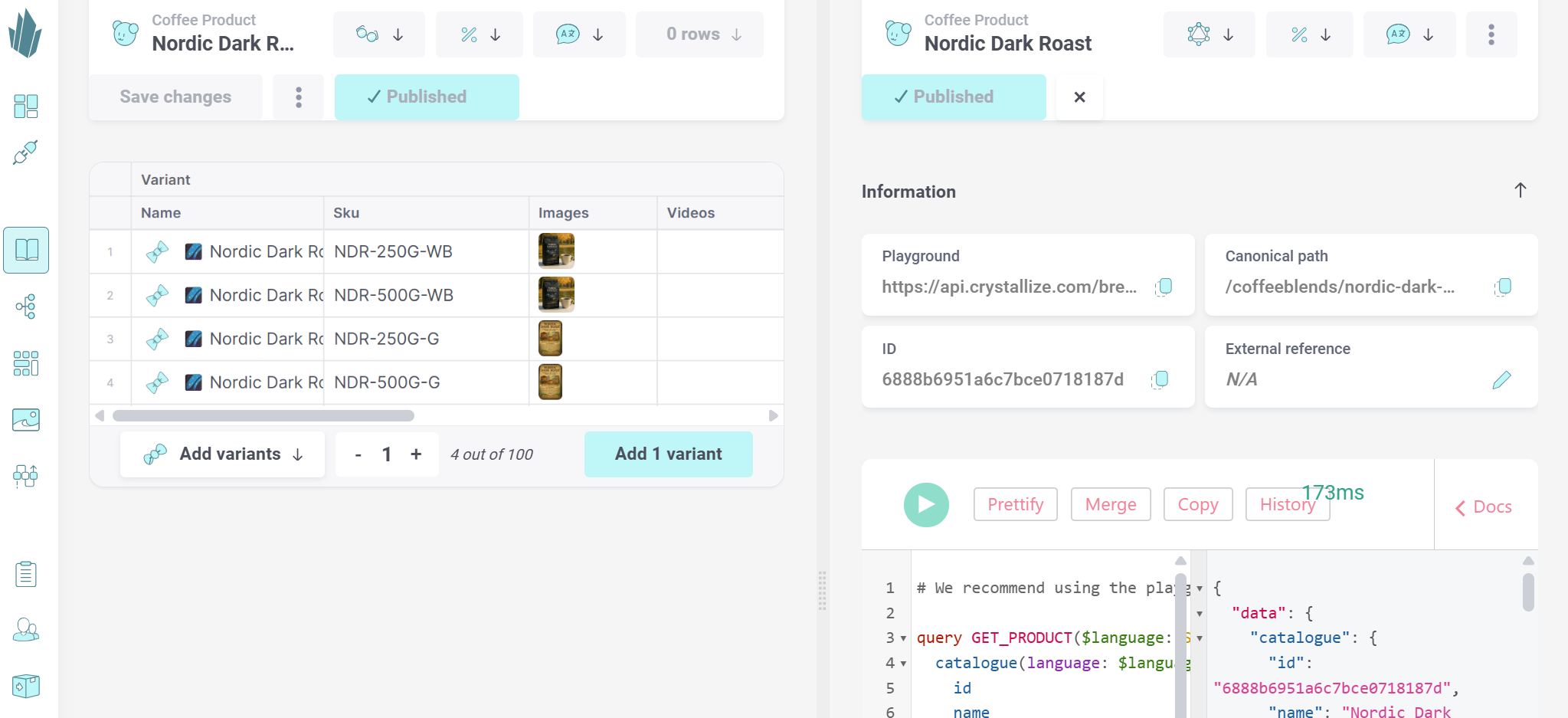
The variant-centric approach drastically reduces duplication and errors. With spreadsheets and many traditional PIMS, just changing prices meant editing four separate records. Here, I update them once in the Nerdy View grid, hit save, and every frontend reflects it in minutes. Bulk edit on steroids if you ask me. That’s hours of grunt work saved per product rollout.
I didn’t have to make four separate entries for Nordic Dark Roast – just one product with four variants inside it. Each variant can have its own images (e.g., the 1kg bag photo versus the 250g bag photo) and its own stock-keeping unit. Speaking of stock, inventory for each variant is tracked in real time in Crystallize. Suppose my supplier's warehouse reports that only 10 units of Citrus Bloom – 1kg Ground remain. In that case, we update that variant’s stock in the PIM, and every channel (our sites, apps, etc.) will automatically reflect the new stock count.
This prevents overselling and disappointing customers. It also builds trust – customers always see accurate availability. We can even manage multiple stock locations if needed (say, separate warehouses for Europe vs. North America), but in my current setup, I just track total inventory per variant.
💡The key point is that variant-level stock and pricing give us fine-grained control.
It’s also scalable: adding a new size or limited-edition grind down the line is as simple as adding a variant. We can even bulk-edit prices or stock for many variants at once in the Nerdy View grid, which feels like using Excel but right inside the PIM.
Multilingual and Multi-Region Support for Global Reach
Going global sounds exciting — until you realize how fast your product data turns into chaos. Multiple currencies, regional SKUs, localized descriptions — every new market multiplies the margin for error. Unless your PIM is built to handle it.
I knew that from the start and planned for robust multilingual and multi-region support in my PIM, which (luckily) is baked right into Crystallize. The platform supports multilingual content throughout the product catalog, making it simple to manage product data and storytelling for multiple markets. This means that within one product entry, I can maintain translations for each textual field.
For example, Velvet Cocoa blend’s description was initially written in English. Using Crystallize’s localization features, I added Spanish translations for all its content fields within the same product item. In the era of AI, why do it manually (which you can) when you can do it by using our AI-powered Translation App, or go full AI like Plantasjen. The point is, I didn't have to create separate product records for each language – I just translated the fields in place.
Region-specific differences go beyond just language – pricing is a big one. I price our coffees in Euros for most of Europe, but in Norway I list in Norwegian Krone (NOK). With Crystallize, this was straightforward using price variants. Essentially, you define multiple price entries per variant, each tagged with a currency or context, giving you flexible multi-currency pricing without duplicating products.
💡Maintaining a single central product record per item, with localized content and multiple prices, offers significant benefits.
It ensures consistency and gives you the confidence to expand into new markets faster, knowing your PIM can handle the complexity.
Bridging Product Data and Storytelling with Topic Maps
Quality product and great product data are essential, but Brewed to Perfection knows that great storytelling is what turns casual browsers into loyal customers.
I wanted my online store to let customers explore not just by basic categories, but also by the kind of experience or flavor they were seeking. This is where Crystallize’s Topic Maps feature came in as the bridge between our structured product data and the thematic stories I wanted to tell.
Think of topic maps as a flexible tagging or taxonomy system. I set up a few topic maps to classify products by Flavor Profile, Roast Level, and Special Collections. Under Flavor Profile, for instance, I created topics such as Citrus, Chocolatey, Floral, and Nutty. Then I tagged each product accordingly: Citrus Bloom with Citrus and Floral notes, while Nordic Dark Roast with Chocolatey.
Similarly, I used a Roast Level map with Light, Medium, and Dark topics and tagged each coffee. Crystallize’s topic maps essentially let us build a semantic layer on top of our catalog, independent of the physical product hierarchy. A product can belong to multiple topics across different maps (e.g., Dark roast + Chocolatey + Limited Edition), enabling more nuanced browsing and merchandising.
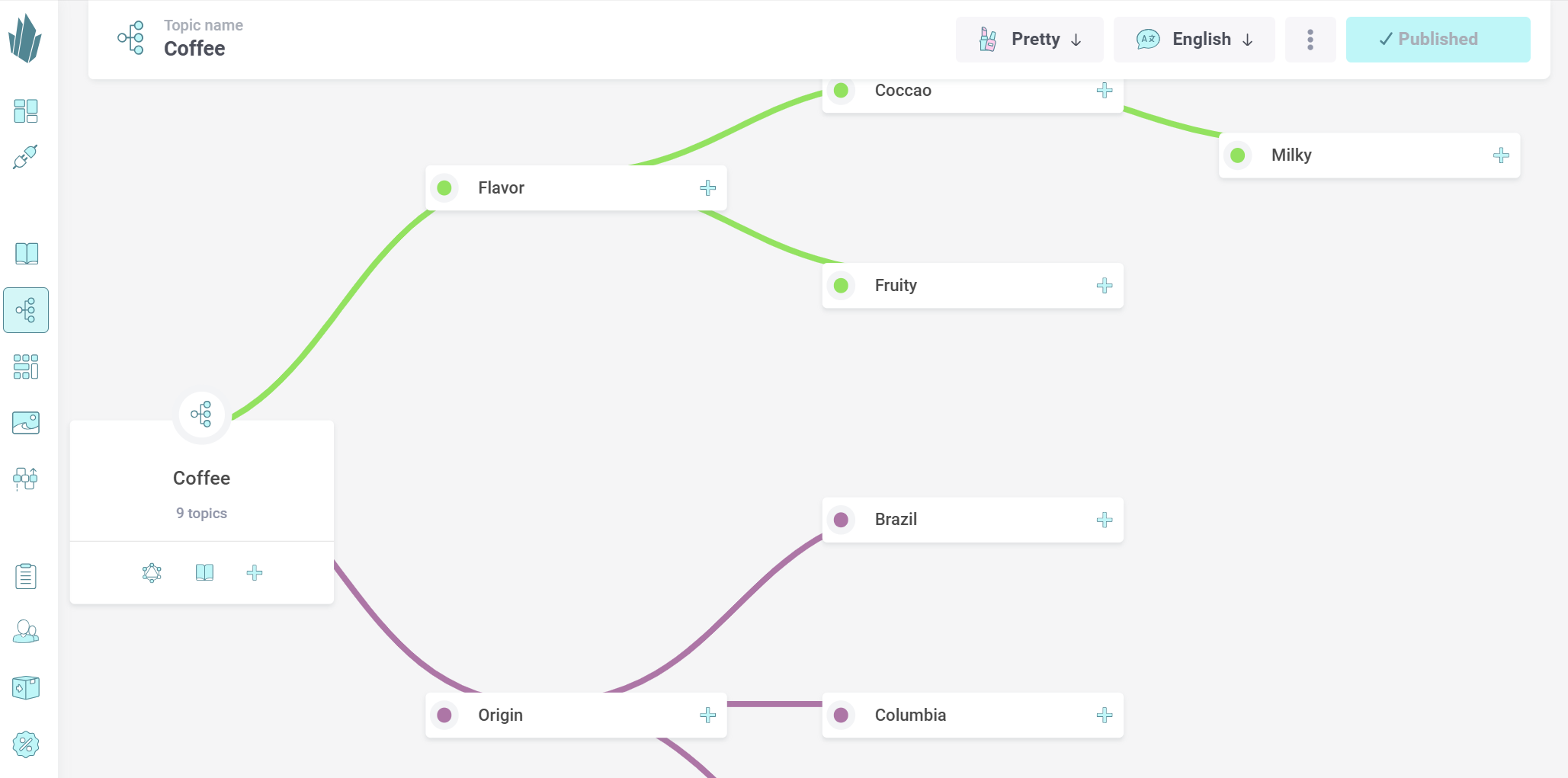
The power of this approach will be evident on the website. Because products are tagged by flavor and roast, I can build dynamic pages and filters, such as Fruity Coffees, that automatically showcase all items with the Fruity/Citrus flavor profile. Under the hood, this is just our frontend querying the PIM for products with certain topic tags – the PIM does the heavy lifting of knowing which items match the criteria.
Another huge advantage is how topic maps and related content features helped us tie storytelling content to products. Not only can I tag products, but I can also create content pages (using Crystallize's document shapes) for brewing guides, coffee origin stories, blog posts, etc. Crystallize basically adds a relational layer between products and marketing content, which enabled me to build truly content-driven commerce experiences.
💡Topic Maps gives me a way to organize content across multiple dimensions (hierarchy, taxonomy, and direct links), turning the website into something more than a mere e-commerce catalog.
I am not just tagging products — I am creating a discovery engine. With a few smart topic maps, customers could browse by taste, roast, or even season. It felt less like a catalog, more like a sommelier guiding them through Brewed to Perfection blends.
Developer-Friendly API-First Design (GraphQL Superpowers)
I need to touch on this briefly. Getting data out of Crystallize is a total breeze, just like setting it up. Thanks to GraphQL, my future Next.js storefront will snag exactly what it needs — product descriptions, variants, prices, and stock — all in one go. No extra junk, no guessing games, and no rigid templates.
Since Crystallize is headless and API-first, Brewed to Perfection isn't stuck with just one presentation or commerce layer. That means I can totally redesign my website or switch frontend frameworks (from Next.js to Vue, Tanstak, or Astro) without messing with the backend product management.
Better Collaboration and Faster Time to Market
One often-overlooked benefit of a modern headless PIM like Crystallize is its improvement in team collaboration and speed. As a marketer, I need a dev who can help me get things up while I work in parallel on content, without stepping on each other’s toes and without endless back-and-forth. I crafted a compelling coffee story, tweaked a description, and launched a new promotional page all on my own. Meanwhile, the developers focus on building and improving the performance of the customer-facing site, knowing that the content is reliably coming from the PIM via APIs.
This kind of agility – going from idea to live across all channels in perhaps hours – is something traditional setups struggled to do. I believe it will give us a competitive edge in delighting customers with fresh content and offers.
Collaboration is further enhanced by features like roles/permissions and content versioning in Crystallize. For example, somewhere down the line of my business growth, a content lead will draft a new product description, a regional manager will translate another product’s text into Spanish, while a developer adjusts the frontend styling. The single source of truth in the PIM ensures everyone is looking at and working with up-to-date information. This level of collaboration and workflow efficiency ultimately shortens time-to-market for new offerings.
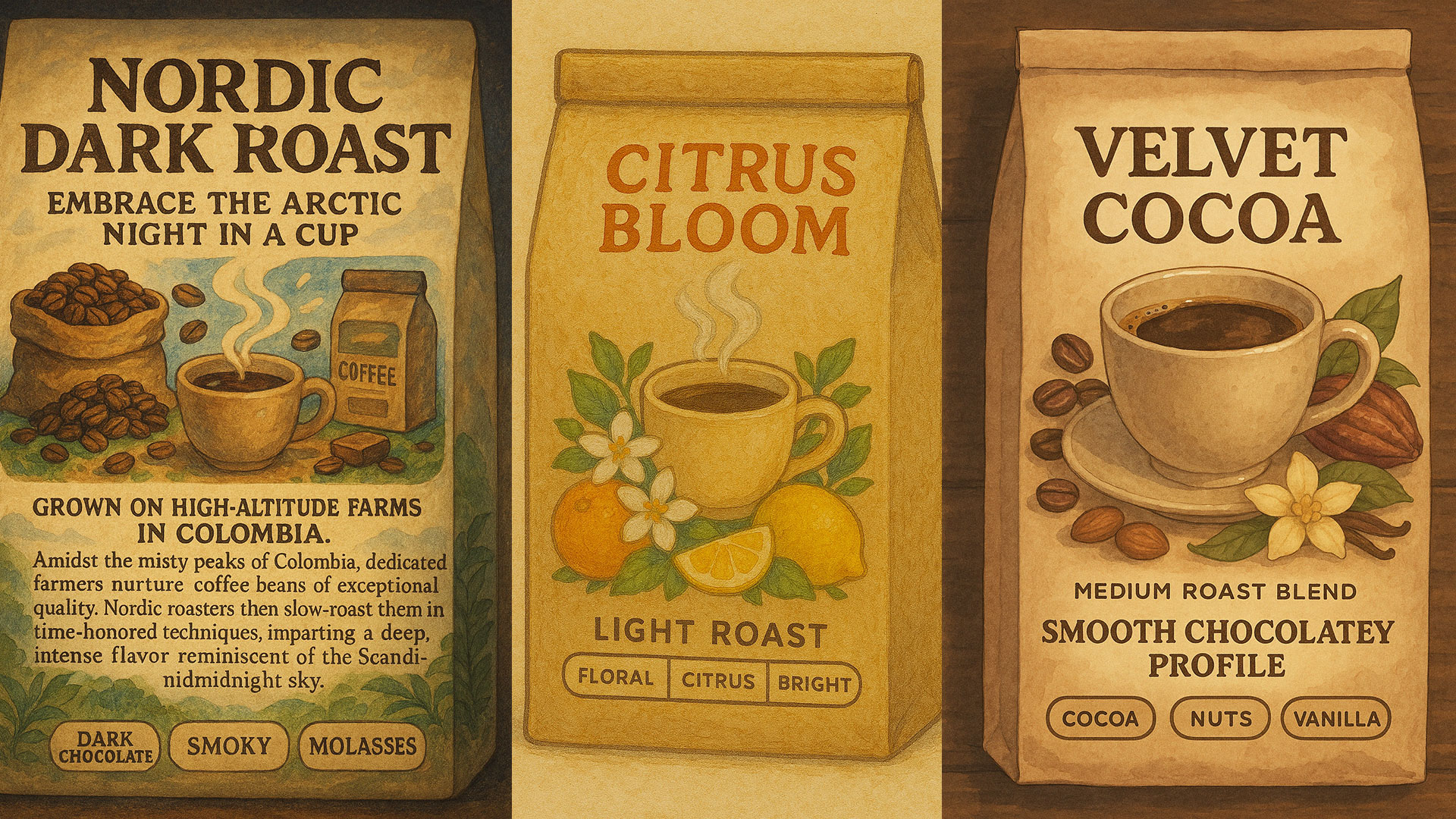
💡From a business perspective, these capabilities translated into tangible benefits for Brewed to Perfection:
- Agility in Launching Products & Campaigns: I can introduce a new coffee blend or a holiday promotion and have it live across all channels in a flash, thanks to flexible modeling and easy content updates.
- Consistent Customer Experience: Whether a customer is browsing the Nordic or Spanish site, they receive the same accurate product information and a rich story, each in the appropriate language and currency. This consistency builds trust.
- Improved Team Productivity: The Developer is freed from constant content tweaks and data entry, and the content lead is empowered to make updates directly. Each one focuses on what they do best, improving overall productivity.
- Faster Time to Market: The combination of a ready-to-use GraphQL API, customizable shapes, and available boilerplates enables me to roll out a multi-region online presence faster than competitors still struggling with legacy PIMs. A quicker launch means quicker ROI on new products and features.
- Scalability and Future-Proofing: As the brand grows (new channels, more products, maybe a subscription service), the headless PIM foundation can scale with it.
Conclusion: Brewing a Perfect PIM Strategy
This wasn’t just a fun demo or mock brand. Together with my step-by-step guide to building a coffee shop, it became a full-blown PIM strategy in disguise — a way to test, validate, and refine how modern commerce teams can centralize product data, accelerate time-to-market, and deliver richer customer experiences with less overhead...and you can/should use it.
Ready to take the next step? If you're still stitching product data together with duct tape and plugins, you're probably bleeding time, losing consistency, and holding your team back. Consider taking Crystallize for a spin or, better yet, take a hard look at your current PIM and ask: is it helping you grow — or just keeping the lights on?
Look, Crystallize is awesome, but I get that other platforms might be a better fit for you. Our commerce/PIM/CMS comparison pages give you the real lowdown on how Crystallize stacks up against the best.
Alternatively, our deep dive into the top 9 PIM software platforms is a good starting point.
Finally (why not!?) START building with Crystallize for FREE, or Schedule a 1-on-1 demo to see how we can help you create a future-proof online store tailored to your needs.

